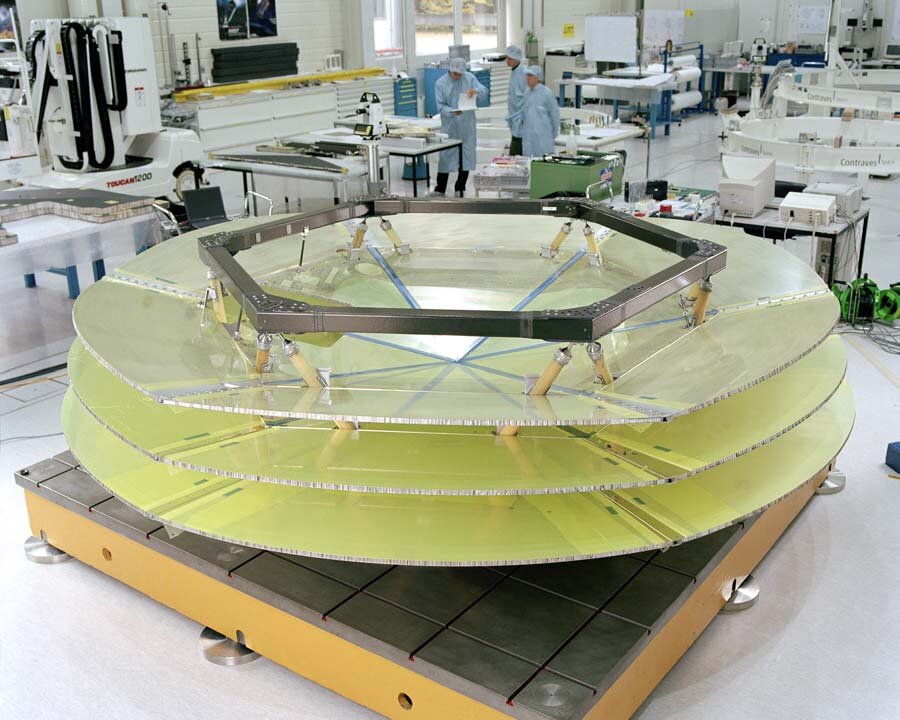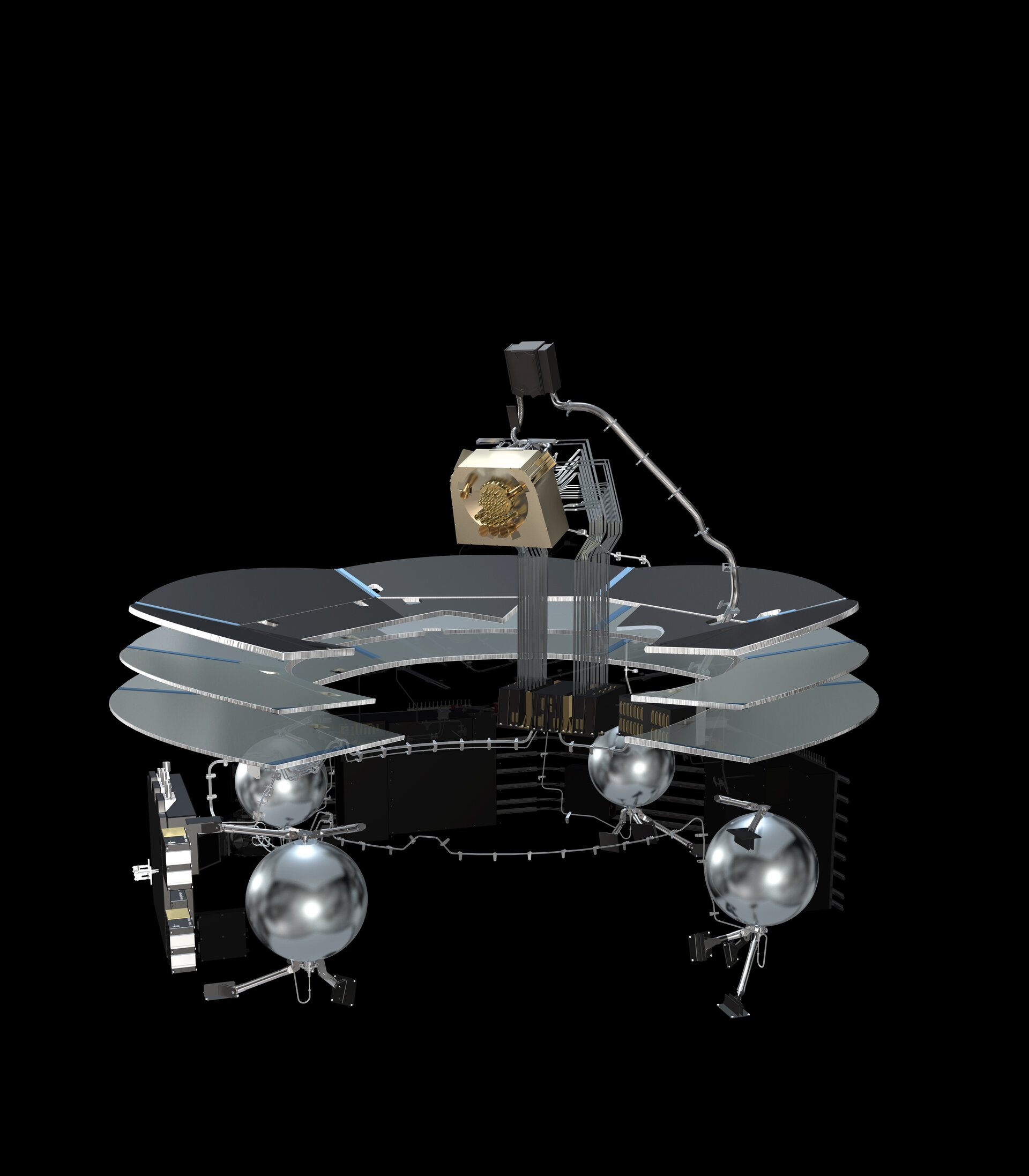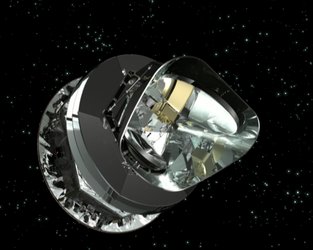Planck's cooling chain
The Planck spacecraft is divided into two sections: a warm service module that includes a permanently illuminated solar array supplying power and a cold payload module protected from stray sunlight by a baffle that doubles as a radiator that cools the telescope and instrument compartment.
The two sections are kept isolated by a set of three thermal shields which are, together with the baffle, considered the first element of the cooling system. Known as V-grooves, these cone-shaped shields are engineered to isolate the radiator baffle from the spacecraft's heat on a passive basis from room temperature down to 50K.
"The V-grooves are kept in permanent shadow by the solar array, and any Sun-pointing surfaces are covered with reflective material to further insulate them," explains Dr. Jewell. "Meanwhile the sides facing deep space are coloured black to act as a radiator with reflective surfaces between the V grooves to maximize the amount of heat exiting the spacecraft. Deep space is only around 2K, so they radiate their heat away. It's the same as going close to a window of a house without double glazing on a cold day – you can feel the cold because heat is being radiated outside."
Second-stage cooling is provided by a hydrogen sorption cooler, which is technology supplied for the mission by the US Jet Propulsion Laboratory. Hydrogen gas is expelled through a valve at high pressure, leading to cooling as it expands on the other side. After cooling, the return gas is then absorbed by metal hydrides which then release it again once heaters are used to increase its temperature so the cycle can begin again.
The sorption cooler having brought the temperature down to under 20K, the next stage cooling stage is performed by a Joule-Thomson cooler with frictionless mechanical pumps forcing helium through a restriction to produce cooling down to 4.5K.
Final stage cooling comes from a dilution cooler originally developed with the help of ESA's Technology Research Programme (TRP). The cooler can only function if all previous cooling stages function as planned, and it relies on the bizarre physics of extremely cold liquid helium, whereby the introduction of helium 3 atoms into a bath of helium 4 forces the helium 4 atoms to expand and hence cool.
Supercool physics

"For Planck we are going down four orders of magnitude less than normal room temperature," explains Dr. Jewell. "If we warmed up by the same magnitude, we would arrive at 3 million degrees Kelvin which is the temperature of the Suns corona. So it is unsurprising that the physical properties being experienced are very different at 0.1K, which is the temperature needed by Planck's highest sensitivity instrument, the High Frequency Instrument (HFI).
The mission includes redundant sorption coolers and a helium Joule-Thomson cooler, Dr. Jewell says: "If the dilution cooler is lost then we lose a single instrument, HFI, but the Low Frequency Instrument (LFI) continues to operate and the entire mission would not be lost."
Proving the technology

While technicans will be working on Herschel's cryogenic system until the last few days before launch, filling its cryostat with helium-4 and keeping it cooled with extra helium, with Planck it is a very different story.
"Fundamentally, once we have completed our thermal vacuum testing there's very little extra we can do cryogenically until it's up there and starting to work. Planck is clearly a very ambitious mission from a cryogenic point of view but we have a lot of margin in many areas, and we are confident it will work flawlessly and achieve its planned two sky surveys at least."
Like Herschel the satellite is destined for the Earth-Sun Lagrange Point 2 (L2), 1.5 million km away from Earth, its internal voyage down to the verge of absolute zero taking place during its three months journey away from Earth.
Once Planck's array of mechanical cooling technologies have been demonstrated in space then they will have many other potential applications in space, increasing the performance of future science and astronomy instruments as well as a new generation of infrared Earth observation sensors.
More information
Chris.Jewell @ esa.int




